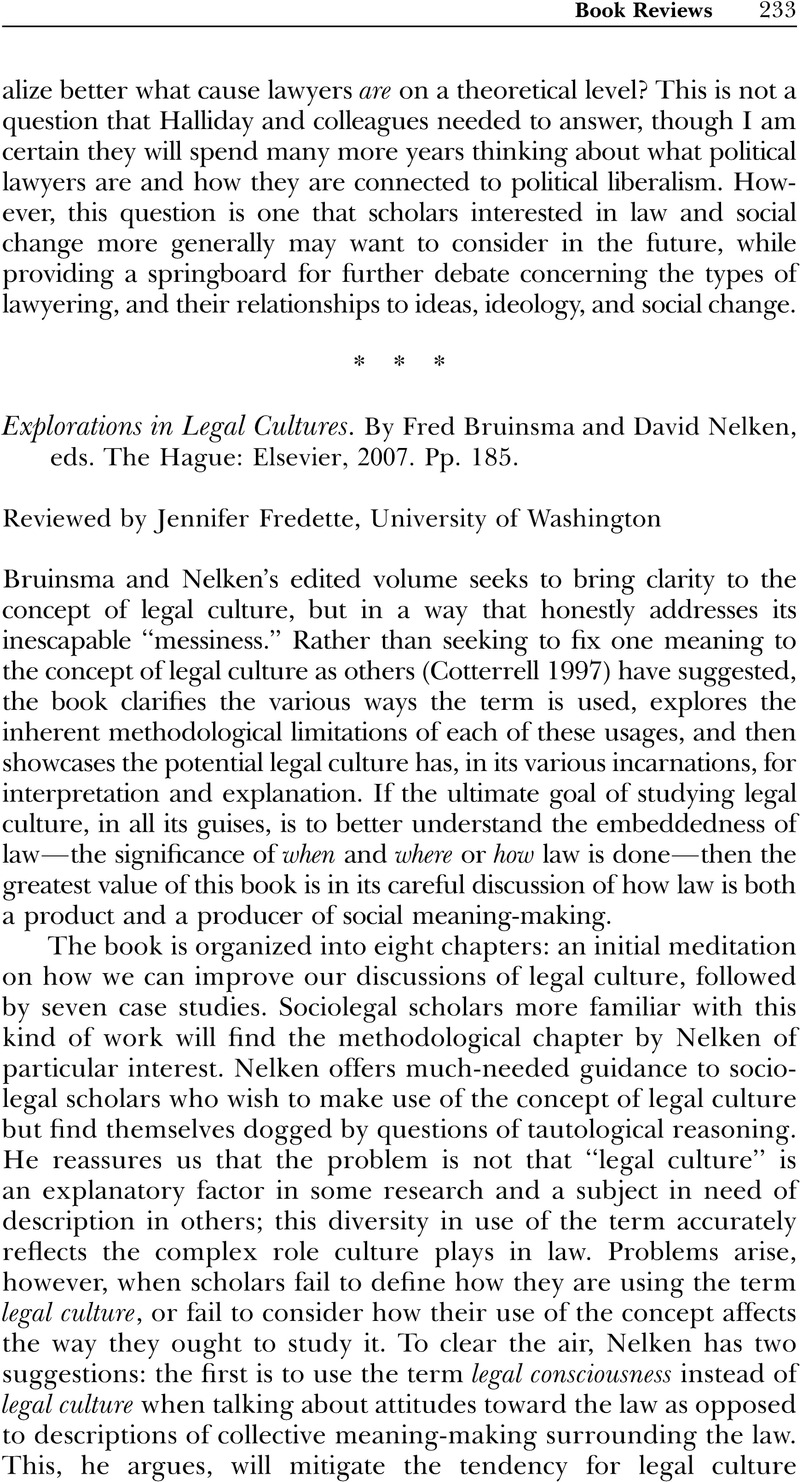No CrossRef data available.
Article contents
Explorations in Legal Cultures. By Fred Bruinsma and David Nelken, eds. The Hague: Elsevier, 2007. Pp. 185.
Review products
Explorations in Legal Cultures. By Fred Bruinsma and David Nelken, eds. The Hague: Elsevier, 2007. Pp. 185.
Published online by Cambridge University Press: 01 January 2024
Abstract
An abstract is not available for this content so a preview has been provided. Please use the Get access link above for information on how to access this content.

Information
- Type
- Book Reviews
- Information
- Copyright
- © 2009 Law and Society Association.
References
Cotterrell, Roger (2007) “The Concept of Legal Culture,” in Nelken, D., ed., Comparing Legal Cultures. Aldershot, United Kingdom: Dartmouth.Google Scholar

